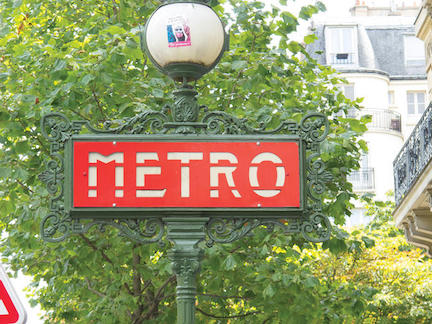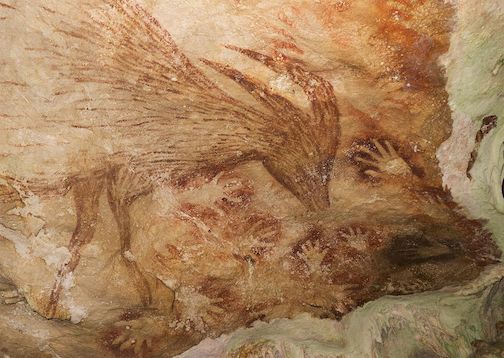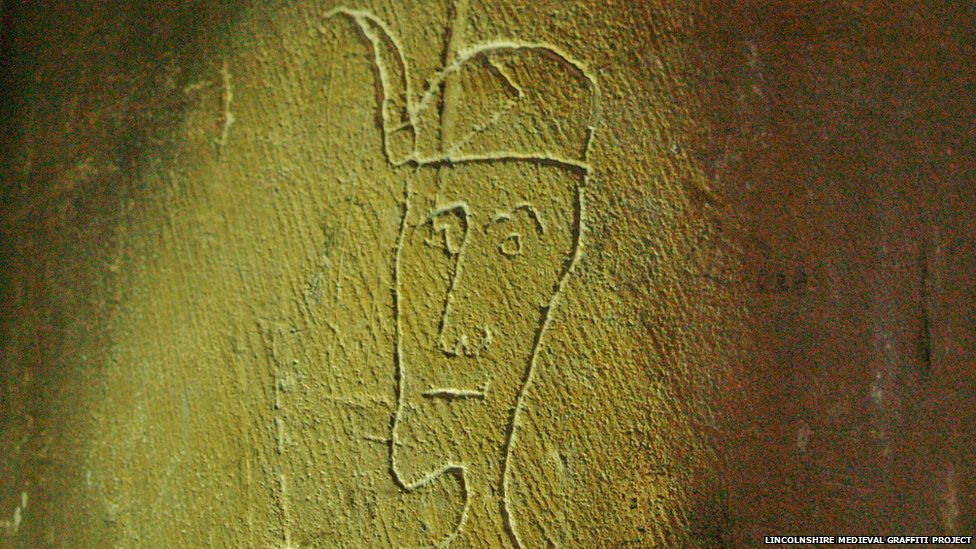Historical Item
Art and Gentrification: Everything Must Go....
[From Stencil Archive: At what point is public art part of the problem of gentrification? When is corporate manipulation and intrusion too much for a community to bear? Can public art be created without thinking about the environment, the wall it is painted on, and the community in mind? What are the limits of making money for one's art as opposed to the created pieces being part of the problem of massive evictions and migrations of lower-income and working class populations? These questions have been stewing for months now, and there is surprisingly little writing on these issues. Megan Wilson, co-curator of the Clarion Alley Mural Project, pushes back and contemplates these sometimes blurry lines between selling out and paying the rent. Below is an essay she wrote that touches on some of the above questions. For a much better version, with photographs and links, please go to…
Read moreShepard Fairey's Arrest Begs Question: Art or Vandalism?
 How Shepard Fairey's arrest provides a new look at an old question: Is it art or is it vandalism?
How Shepard Fairey's arrest provides a new look at an old question: Is it art or is it vandalism?
By DEBORAH VANKIN AND DAVID NG (LA Times)
Shepard Fairey has never been one to play by the rules — and that's par for the course for someone in a street art community that exists on the cultural margins.
Or does it?
The L.A.-based street artist and graphic designer, best known for his 2008 "Hope" poster timed with Barack Obama's presidential campaign as well as the "Obey" image seen on posters and T-shirts worldwide, was arrested last week while passing through customs at Los Angeles International Airport. Authorities there noticed that Detroit police had issued a…
Why Stencil Typography Is Here To Stay
 Why Stencil Typography Is Here To Stay
Why Stencil Typography Is Here To Stay
(from fastcodedesign.com; photo by Louise Fili)
DESIGNERS LOUISE FILI AND STEVEN HELLER COMPILE 60 YEARS OF STENCIL TYPE FROM 8 COUNTRIES AND REVEAL WHY THE PRIMITIVE STYLE STILL REIGNS.
The stencil is one of the world’s most primitive printing techniques. It dates back to prehistory, with stencils found in caves, in the art of ancient China and Japan, and in the crafts of indigenous people worldwide. Stencil typefaces are still popular today, whether in the form of new, witty takes on the genre, like Der Weiner Stentzel’s sausage shapes for letterforms, or vintage typefaces redrawn as stencils, like Bodoni or Century.
…
Read moreTaking a Tour of El Castillo Cave, Seeing Ancient Hand Stencils
19 November 2014
A journey deep inside Spain’s temple of cave art
In Spain Arts & Architecture By Rachel Corbett, for the BBC
I gasped at my first glimpse of a cave painting: a crude red outline of a deer with one wild circle for an eye. Its iron pigments blazed under the lamplight. The illusion of a breastbone emerged, ingeniously, out of a hump in the limestone wall. After a while, a cave becomes a long black tunnel of sensory deprivation; the sight of this tender image jolted my breath back to life.
“Can you tell you’re in a sacred place?” asked Marcos Garcia Diez, the archaeologist who had agreed to show me some of the most breathtaking rock art ever created. “This cave is like a church and that’s why ancient people returned, returned, returned here for thousands of years.”
…
Read more40,000 Year Old Hand Stencils in Indonesia
 Cave Paintings in Indonesia Redraw Picture of Earliest Art
Cave Paintings in Indonesia Redraw Picture of Earliest Art
The dating discovery recasts ancient cave art as a continent-spanning human practice.
Dan Vergano
National Geographic
PUBLISHED OCTOBER 8, 2014
A hand painted in an Indonesian cave dates to at least 39,900 years ago, making it among the oldest such images in the world, archaeologists reported Wednesday in a study that rewrites the history of art.
The discovery on the island of Sulawesi vastly expands the geography of the first cave artists, who were long thought to have appeared in prehistoric Europe around that time. Reported in the journal Nature, the cave art includes stencils of hands and a painting of a babirusa, or "pig-deer," which may be…
Read moreMysteries of medieval graffiti (UK)
Mysteries of medieval graffiti in England's churches
By Neil Heath
BBC News (See all the photos here: http://www.bbc.com/news/uk-england-28035013)

A head of a man was found etched into a wall of a church in Gonerby, Lincolnshire - but what does it mean?
Medieval graffiti of straw kings, pentagrams, crosses, ships and "demon traps" have been offering a tantalising glimpse into England's past. What do the pictures reveal about life in the Middle Ages?
A project to record the graffiti, which began in Norfolk, has now been rolled out to other areas and is gradually spreading across England.
Armed with just a torch and a camera, a team of volunteers have recorded more than 28,000 images from churches in Norfolk alone and are…
Read more36,000 year old stencils get world heritage status
'Prehistoric Sistine Chapel' gets world heritage status
http://www.bbc.com/news/entertainment-arts-27978440
A cave in southern France dubbed the "prehistoric Sistine Chapel" has been added to Unesco's World Heritage list.
The 1,000 drawings carved in the walls of the Decorated Cave of Pont d'Arc, or Grotte Chauvet, are 36,000 years old and include mammoths and hand prints.

Cave experts only discovered it in 1994 as the entrance had been concealed by a rockfall 23,000 years earlier.
It was one of several cultural and natural wonders granted the status by a committee of delegates in Doha, Qatar.
UN cultural agency Unesco said the cave, located in the Ardeche region of France featured "the earliest and best-preserved expressions of…
Read moreGoogle Adds Graffiti to Its Art Portfolio
Google Adds Graffiti to Its Art Portfolio
By RACHEL DONADIO ::: JUNE 10, 2014
PARIS — There’s a portrait of an anonymous Chinese man chiseled into a wall in Shanghai, a colorful mural in Atlanta and black-and-white photographs of eyes that the French artist JR affixed to the houses of a hillside favela in Rio de Janeiro. These are among the images of more than 4,000 works included in a vast new online gallery of street art that Google is unveiling here on Tuesday.
Called the Street Art Project, the database was created by the company’s Paris-based Google Cultural Institute. Using images provided by cultural organizations worldwide, some of which were captured with Google’s Street View camera technology, it includes street art from around the globe, including work that no longer exists, like the 5Pointz murals in Long Island City, Queens, or the walls of the Tour Paris 13 tower in France.
With the initiative, Google is the latest organization…
Read moreinvurt.com Interviews DLUX (Now and Then, Melbourne)
Interview – DLUX – James Dodd
http://www.invurt.com/2014/05/14/interview-dlux-james-dodd/
It’s 2004, Melbourne, and things for the cities vibrant stencil art community are about to change. For many years the stencil was king – so much so that books were written, international websites spawned and a global movement eagerly watched the streets come alive in nooks and crannies with cut and sprayed works of art. from the political to the humourous, – in these days, freedom aerosol was still, for the most part, mostly practiced by graffiti artists and what we know as the “street art scene” was dominated by stencils and the artists who created them, plied a swaths across the city.
But 2004 was the year of a major international event in Melbourne, the Commonwealth games, and with it came a massive cleanup across the city – walls washed and sterilised in the name of “making shit look…
Read moreAncient Graffiti at Church of the Nativity
Graffiti and selfies record pilgrims' progress at Bethlehem shrine
Academics are only now studying messages and paintings on the Church of the Nativity's columns dating back to the Crusades
Matthew Kalman in Bethlehem
The Guardian, Monday 23 December 2013 14.31 EST
http://www.theguardian.com/world/2013/dec/23/graffiti-selfies-record-be…
Most visitors to the Church of the Nativity head straight for the grotto beneath the altar where, according to tradition, Jesus was born 2014 years ago. But among the throng of pre-Christmas pilgrims this year, Karen Stern, a historian at Brooklyn College, City University of New York, was more interested in the six-metre-high columns built to support the roof by the Emperor Justinian in the sixth century.
In the gloom of the ancient nave, Stern's torch picks out hundreds of tiny crosses scratched into the four…
Read more